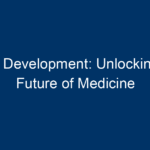In the ever-evolving landscape of healthcare, medical devices stand out as pivotal elements driving significant advancements in patient care. These technologies not only enhance treatment efficacy but also shape the experience of patients and healthcare providers alike. As we delve into the innovations transforming this field, it’s crucial to examine how these devices improve diagnosis, treatment, and overall wellbeing.
Understanding Medical Devices
Medical devices encompass a broad category of tools, instruments, and machines used in the diagnosis, prevention, monitoring, or treatment of medical conditions. Ranging from simple items like tongue depressors to complex equipment like MRI machines, these devices play a critical role in modern medicine. The technological advancements in this area have opened new doors for personalized treatment, minimizing recovery times and maximizing patient satisfaction.
The Role of Technology in Medical Devices
One of the most significant innovations in medical devices is the integration of technology, such as:
1. Artificial Intelligence (AI)
AI has revolutionized the capabilities of medical devices by enhancing data analysis, improving diagnostic accuracy, and enabling personalized patient care. Devices powered by AI can process vast amounts of information quickly, aiding doctors in making informed decisions.
Example: AI in Imaging Technology
AI algorithms are now employed in imaging devices, such as CT and MRI scanners, to identify anomalies with unprecedented precision. This innovation reduces the risk of overlooked conditions, accelerating the diagnosis process.
2. Wearable Technology
Wearable medical devices, such as heart rate monitors and glucose trackers, are becoming increasingly common. These devices empower patients to take charge of their health by monitoring vital signs in real-time.
Example: Continuous Glucose Monitors (CGM)
For diabetic patients, CGMs provide continuous insights into blood sugar levels, allowing for timely interventions and better management of the disease. The convenience of having such information accessible enhances patient adherence to treatment plans.
Cutting-Edge Innovations in Medical Devices
With rapid advancements in technology, several innovative medical devices have emerged, drastically improving patient care.
3. Telemedicine
Telemedicine devices allow healthcare providers to reach patients in remote or underserved areas. This technology not only expands access to care but also streamlines the delivery of services.
Example: Remote Patient Monitoring
Devices enabling remote patient monitoring can track health metrics, such as blood pressure and oxygen levels, and transmit data directly to healthcare professionals. This continuous monitoring helps in early detection and better management of chronic diseases.
4. Robotic Surgery
Robotic-assisted surgical systems have introduced a new era in surgical interventions. These medical devices enhance precision, reduce invasive procedures, and promote faster recovery times.
Example: The da Vinci Surgical System
This state-of-the-art robotic platform allows surgeons to perform complex procedures through small incisions, minimizing pain and scarring while optimizing recovery.
Enhancements in Medical Device Safety and Regulation
As innovations proliferate, ensuring the safety and efficacy of medical devices becomes paramount. Regulatory bodies play a vital role in maintaining high standards.
5. Regulatory Frameworks
Agencies like the Food and Drug Administration (FDA) in the United States set stringent guidelines for the approval and monitoring of medical devices. These regulations ensure that new technologies are thoroughly tested for safety and effectiveness before they reach patients.
6. Cybersecurity Measures
With the increasing connectivity of medical devices, cybersecurity has become a significant concern. Implementing robust security protocols protects sensitive patient data and maintains the integrity of medical systems.
The Impact of Medical Devices on Patient Care
The integration of advanced medical devices into patient care has led to transformative results. The benefits are manifold:
7. Improved Outcomes
With real-time data and enhanced diagnostic tools, healthcare professionals can provide more effective treatments, leading to improved health outcomes for patients.
8. Patient Empowerment
As patients utilize wearable devices and engage with telemedicine, they become more informed and empowered to take control of their health, leading to better adherence to treatment plans.
9. Cost Efficiency
Innovations in medical devices can reduce hospital stays and enhance treatment efficiency, ultimately lowering healthcare costs. This economic advantage is critical in today’s healthcare landscape, where minimizing expenses while maximizing care quality is essential.
Challenges Facing Medical Device Innovations
Despite the positive impact of medical devices, several challenges must be addressed.
10. Accessibility
While innovative devices often enhance care, their high costs can limit accessibility for some patient populations. Balancing innovation with affordability is crucial to ensure that all patients benefit from advancements in technology.
11. Training and Support
Healthcare providers must be adequately trained to use new medical devices effectively. Ongoing education and support are necessary to maximize the potential of new technologies in clinical settings.
Conclusion: Embracing the Future of Medical Devices
As we look forward, the future of medical devices promises exciting advancements that will continue transforming patient care. The integration of AI, wearable technology, robotic surgery, and telemedicine are paving the way for a more efficient, effective, and patient-centered healthcare system.
Actionable Insights
For healthcare professionals:
- Stay informed about the latest advancements in medical devices and their implications for practice.
- Embrace continuous education and training opportunities to effectively utilize new technologies in patient care.
- Advocate for policies that enhance accessibility to innovative devices, ensuring that all patients can benefit from advancements in healthcare.
For patients:
- Engage with your healthcare provider about the latest medical devices available for your condition.
- Use wearable technology to monitor health proactively and share this data with your healthcare team.
- Stay informed about telemedicine options, which can provide greater convenience and access to care.
In conclusion, the evolution of medical devices is not just a technological revolution; it’s a movement towards better patient outcomes, enhanced care experiences, and improved health systems. As innovations unfold, those involved in healthcare—both providers and patients—must embrace the changes poised to enhance health and wellbeing for all.




